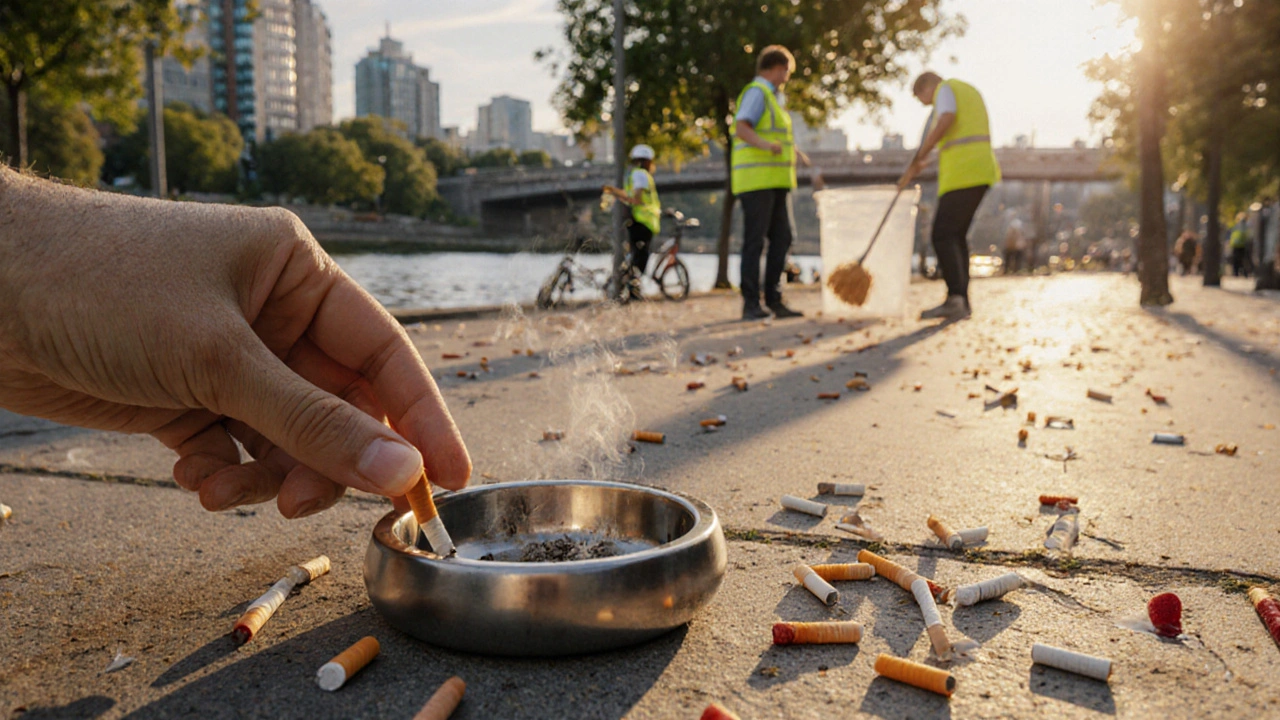
Explore how cigarette waste harms ecosystems, water quality, and wildlife, and learn practical steps, policy actions, and biodegradable alternatives to reduce the impact.
When talking about tobacco litter, the discarded remnants of smoked tobacco such as cigarette butts, tips, and packaging that end up in public spaces. Also known as cigarette butt waste, it pollutes streets, waterways, and wildlife habitats. Cigarette butt is the single biggest piece of this litter, accounting for over 70% of all smoking‑related trash and totaling more than 4.5 trillion butts tossed each year worldwide. Meanwhile, environmental pollution rises as nicotine, heavy metals, and plastic fibers leach into soil and water, harming plants and aquatic life. Researchers have measured up to 30 milligrams of toxic chemicals per butt, enough to affect a small pond’s ecosystem. Understanding these links helps you see why tobacco litter is more than an eyesore—it’s a public‑health challenge that reaches far beyond the sidewalk.
Public health officials warn that chemicals from tobacco litter can trigger respiratory problems for people who breathe the polluted air, especially children and seniors. When rain washes nicotine and cadmium into storm drains, the toxins travel to rivers and eventually drinking water supplies. Wildlife also suffers; birds mistake butts for food, leading to stomach blockages and death in up to 30 % of urban bird populations. To combat this, waste management programs are installing dedicated smoking bins, launching curb‑side collection, and funding community clean‑up drives. Cities that enforce litter fines see a 30 % drop in cigarette‑butt sightings within a year, saving municipalities an estimated $1 million in street‑cleaning costs. Recycling initiatives are turning used filters into plastic pellets for furniture, giving a second life to what would otherwise sit in landfills. Education campaigns that place graphic stickers on cigarette packs reduce littering behavior by up to 15 %. These actions demonstrate that tackling tobacco litter requires both policy enforcement and grassroots participation.
Below you’ll find a curated mix of articles that dig deeper into the science behind tobacco chemicals, explore successful clean‑up campaigns, and offer practical tips you can use right now—whether you’re a city planner, a concerned resident, or anyone who wants cleaner streets. One post breaks down how nicotine contaminates soil and what simple testing kits can reveal in your backyard. Another guide walks you through setting up a neighborhood collection point, including cost‑effective container choices and volunteer coordination. We also cover policy case studies from cities that have cut tobacco litter by half through fines and public‑awareness drives. The collection equips you with actionable insights to reduce the burden of tobacco litter in your community and protect both health and the environment.

Explore how cigarette waste harms ecosystems, water quality, and wildlife, and learn practical steps, policy actions, and biodegradable alternatives to reduce the impact.